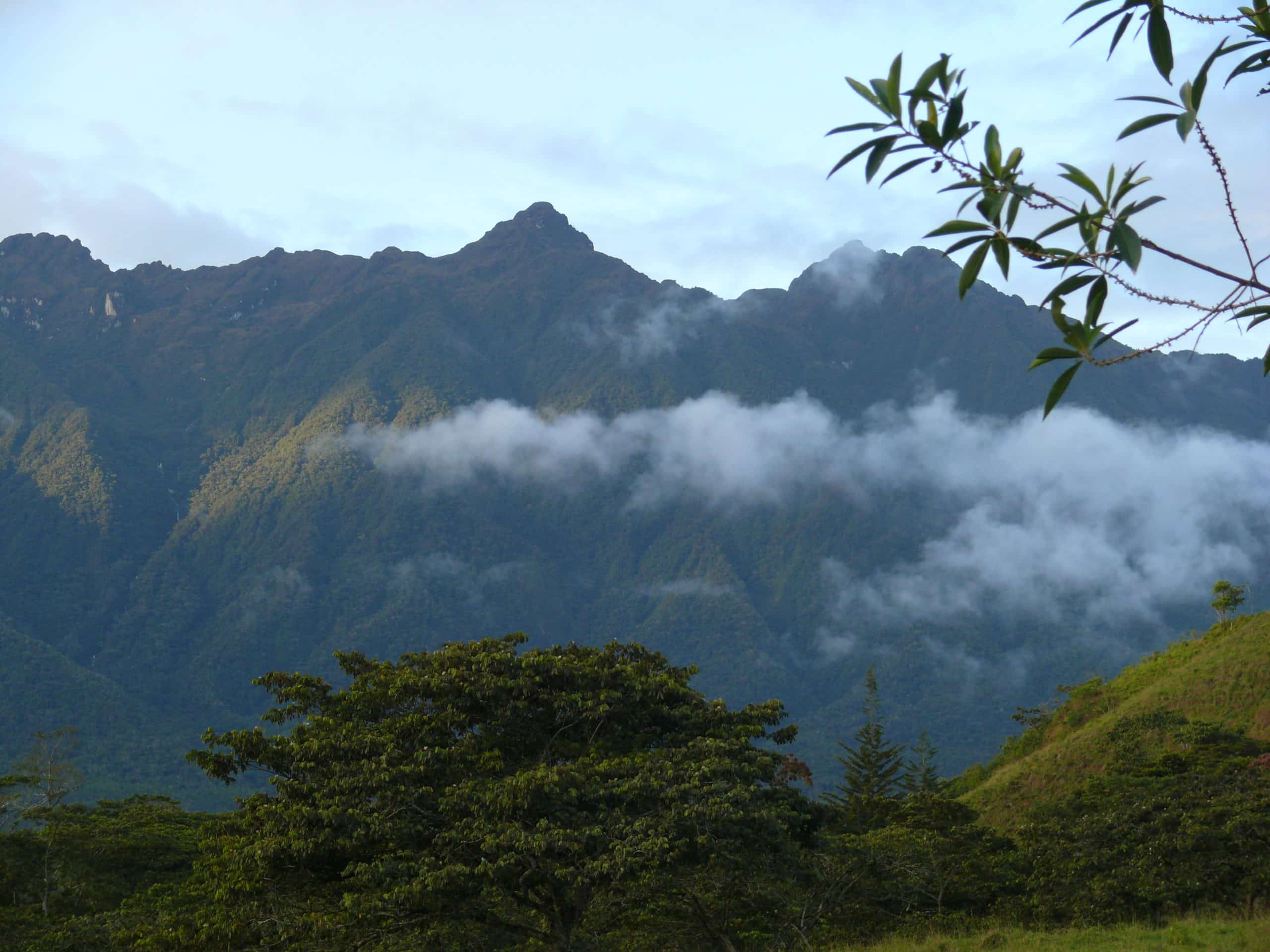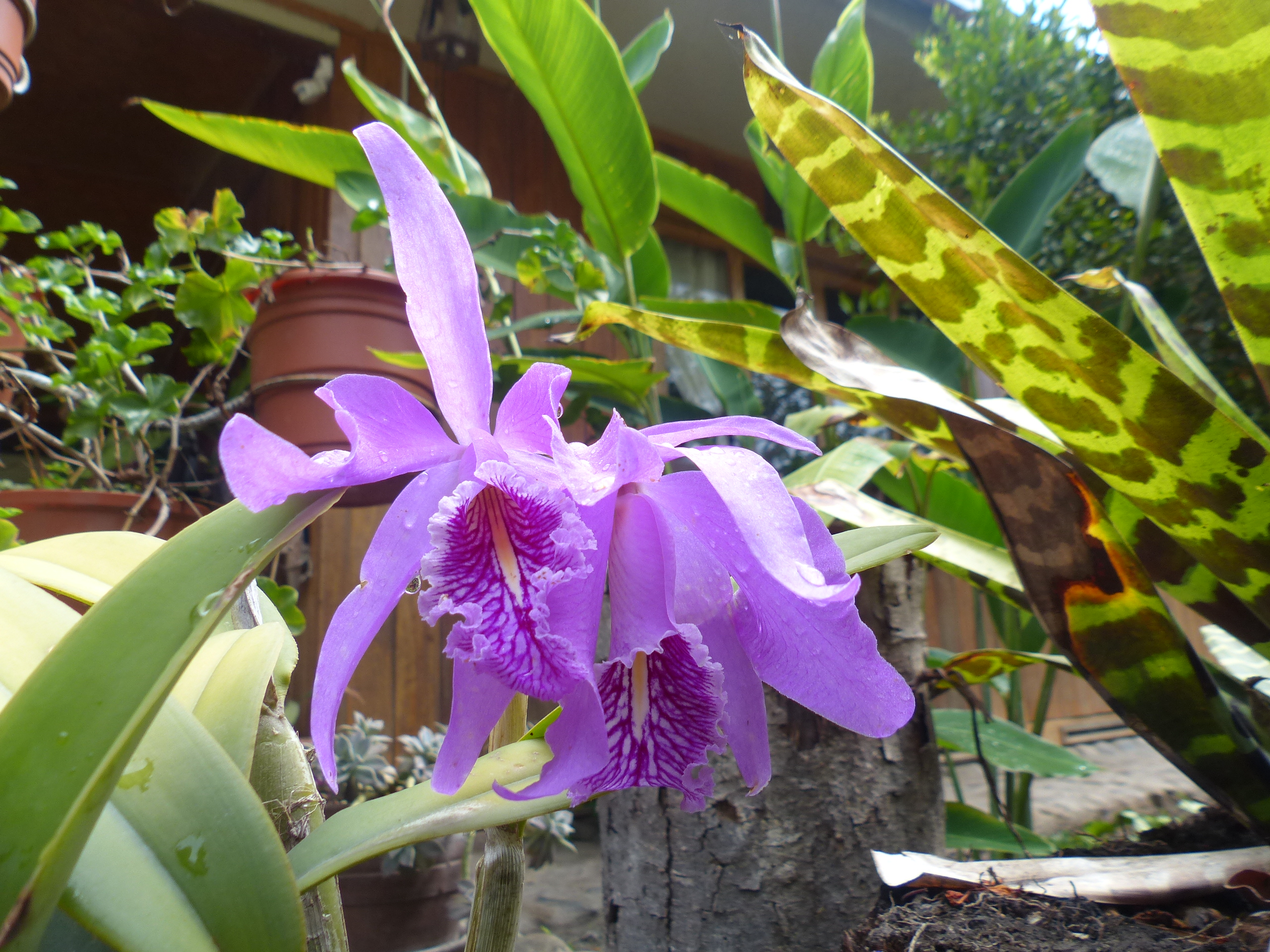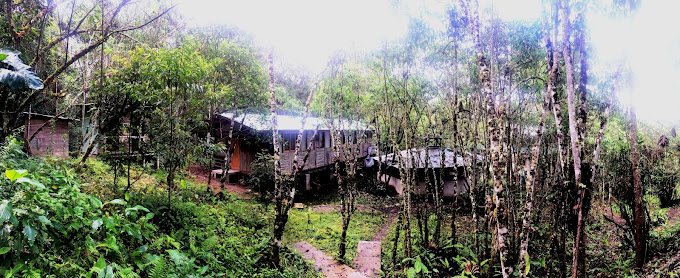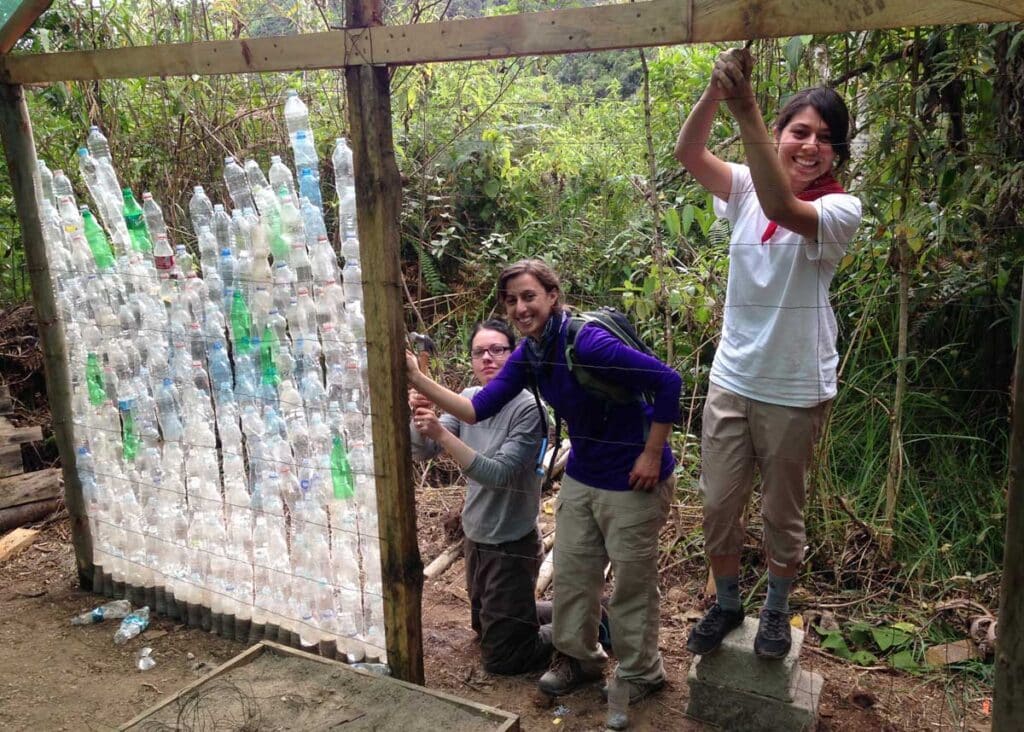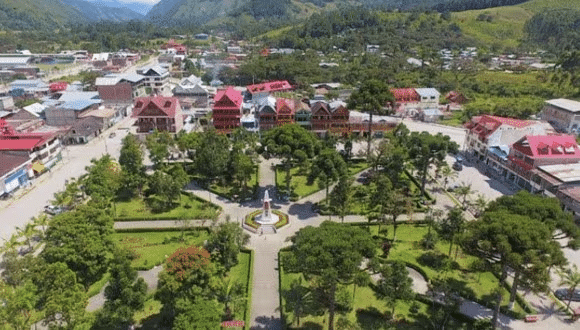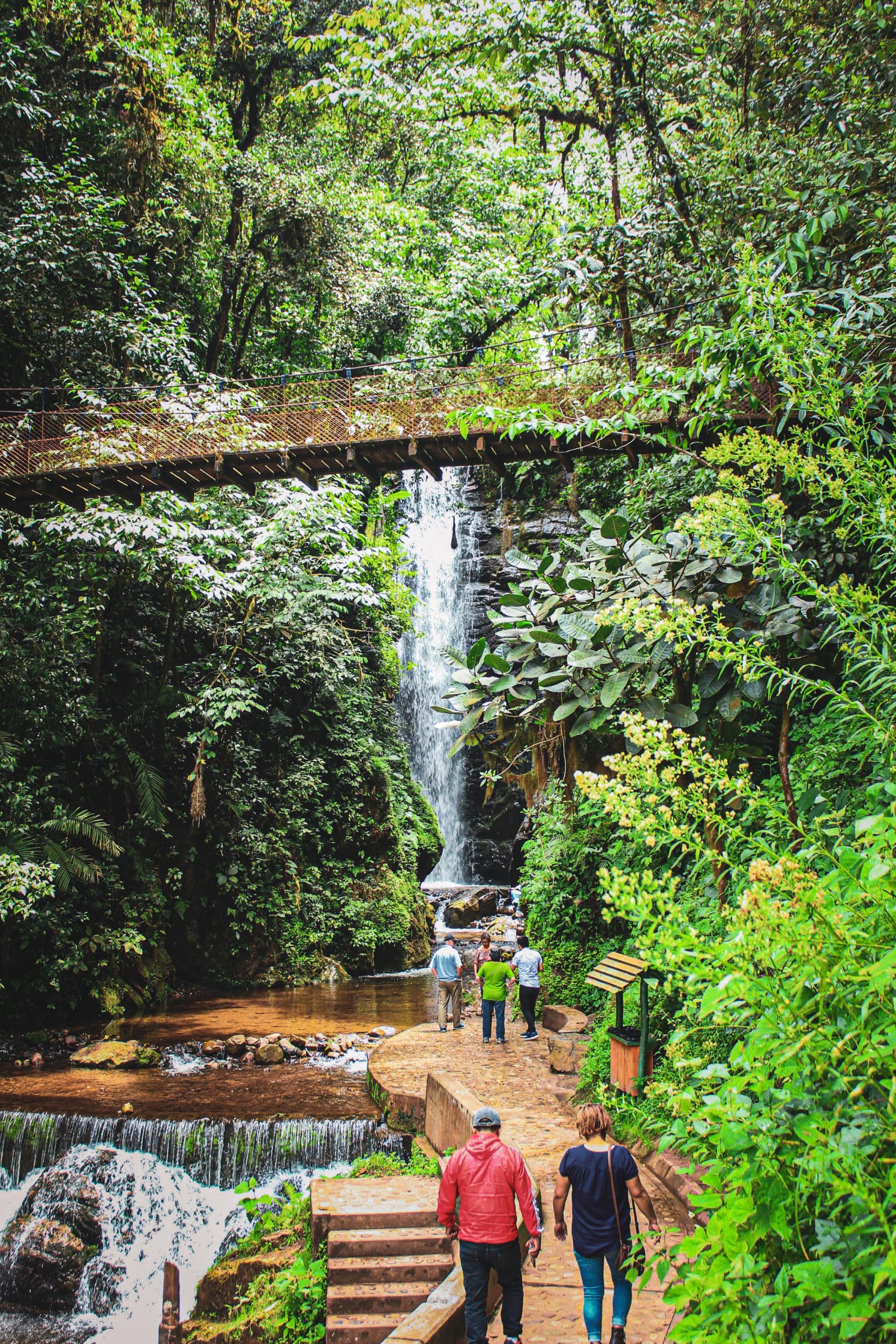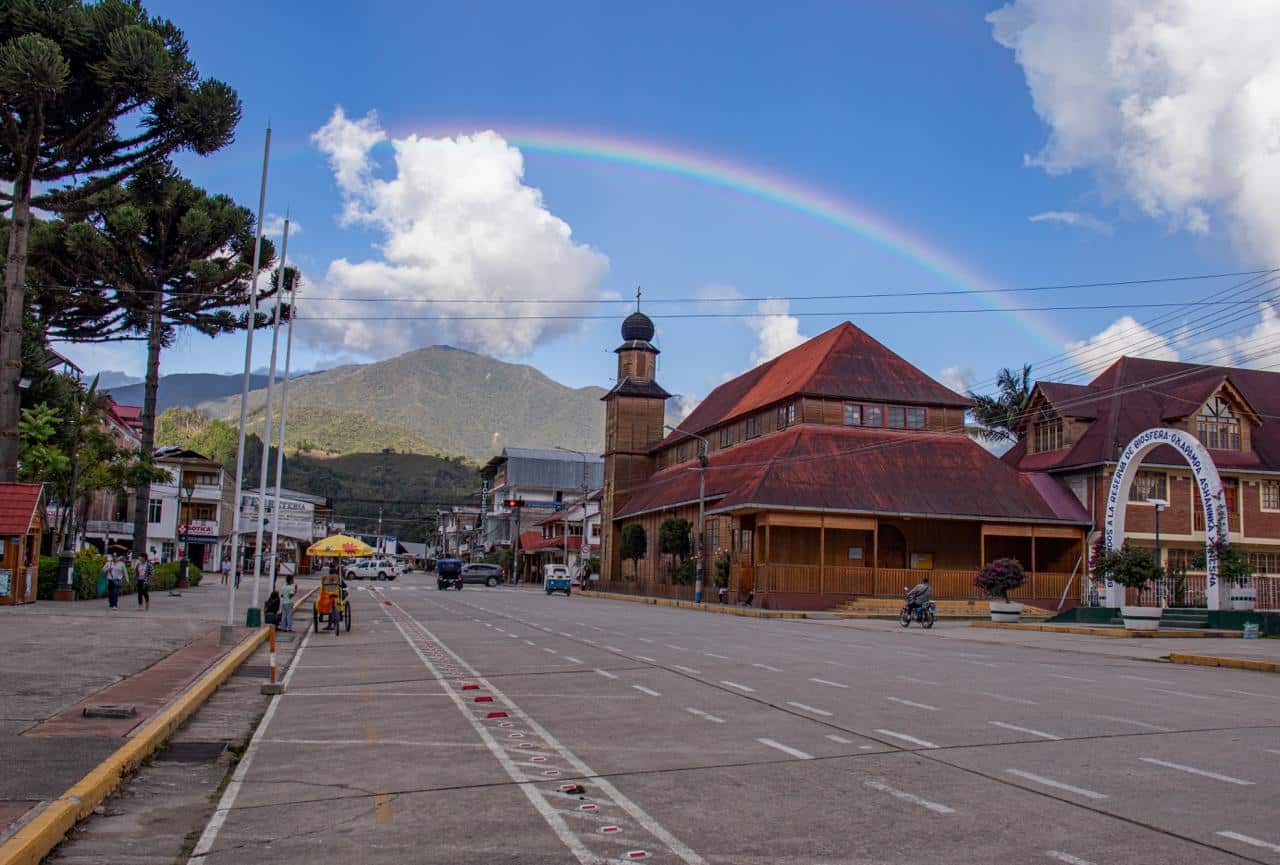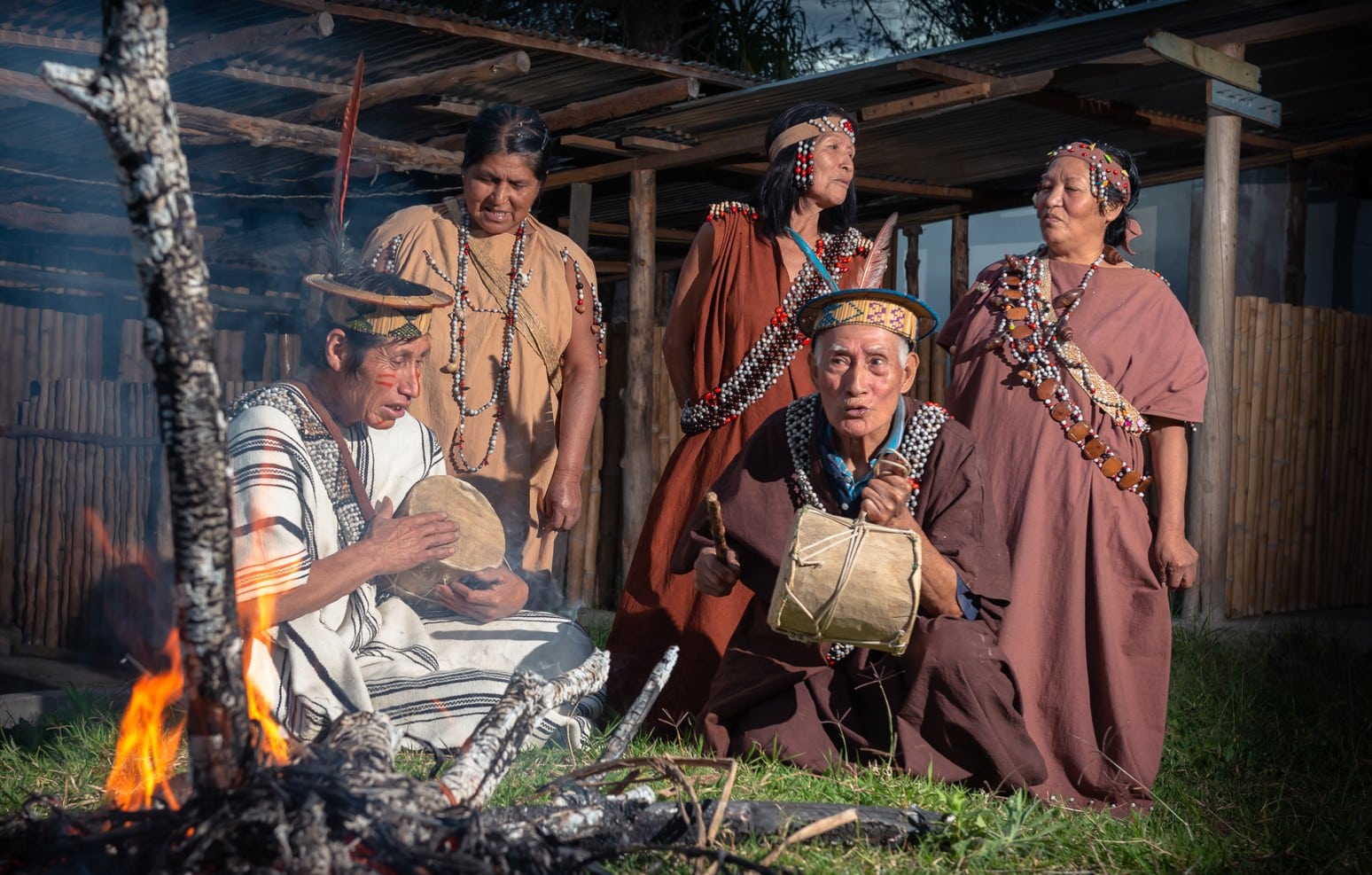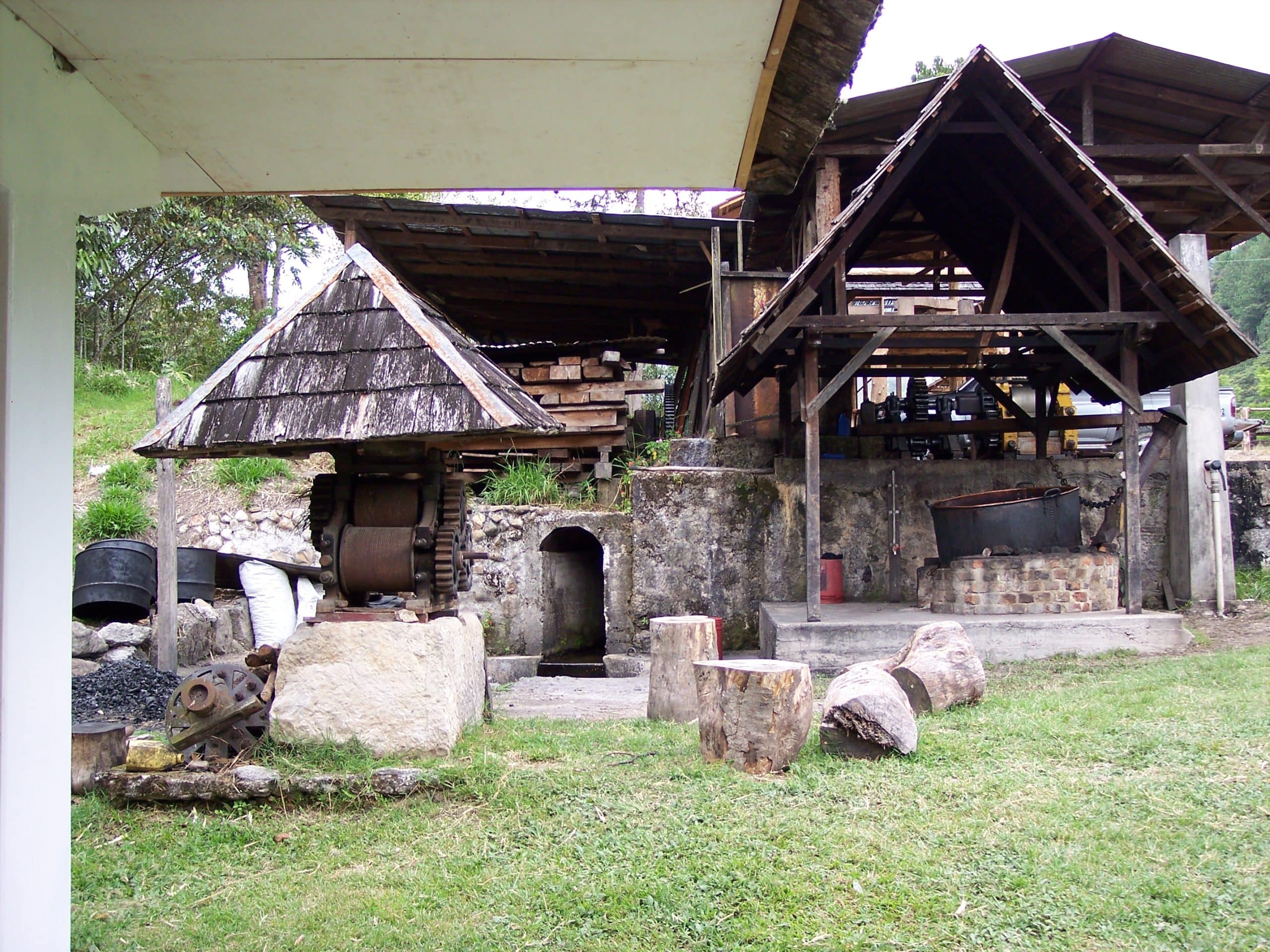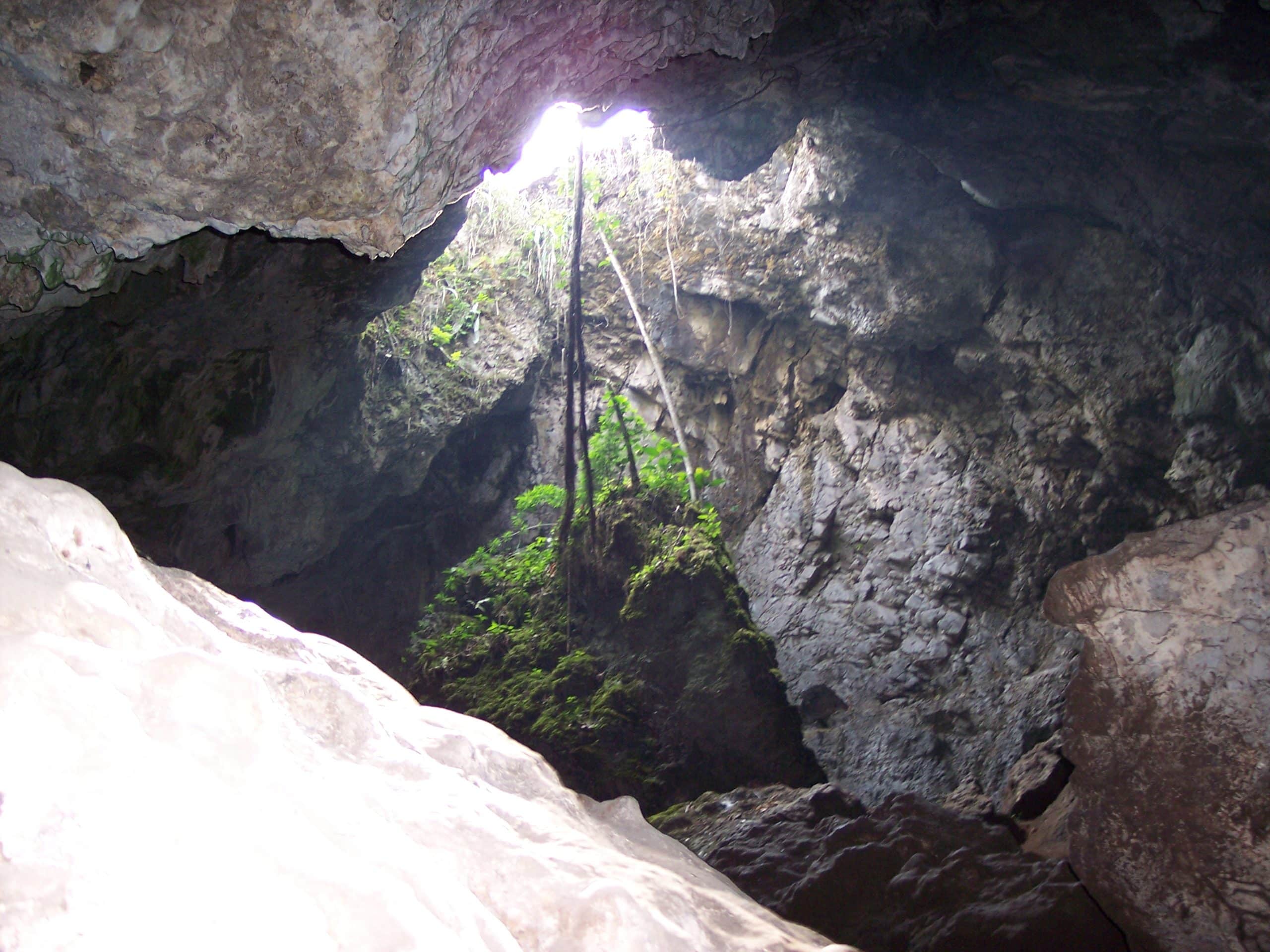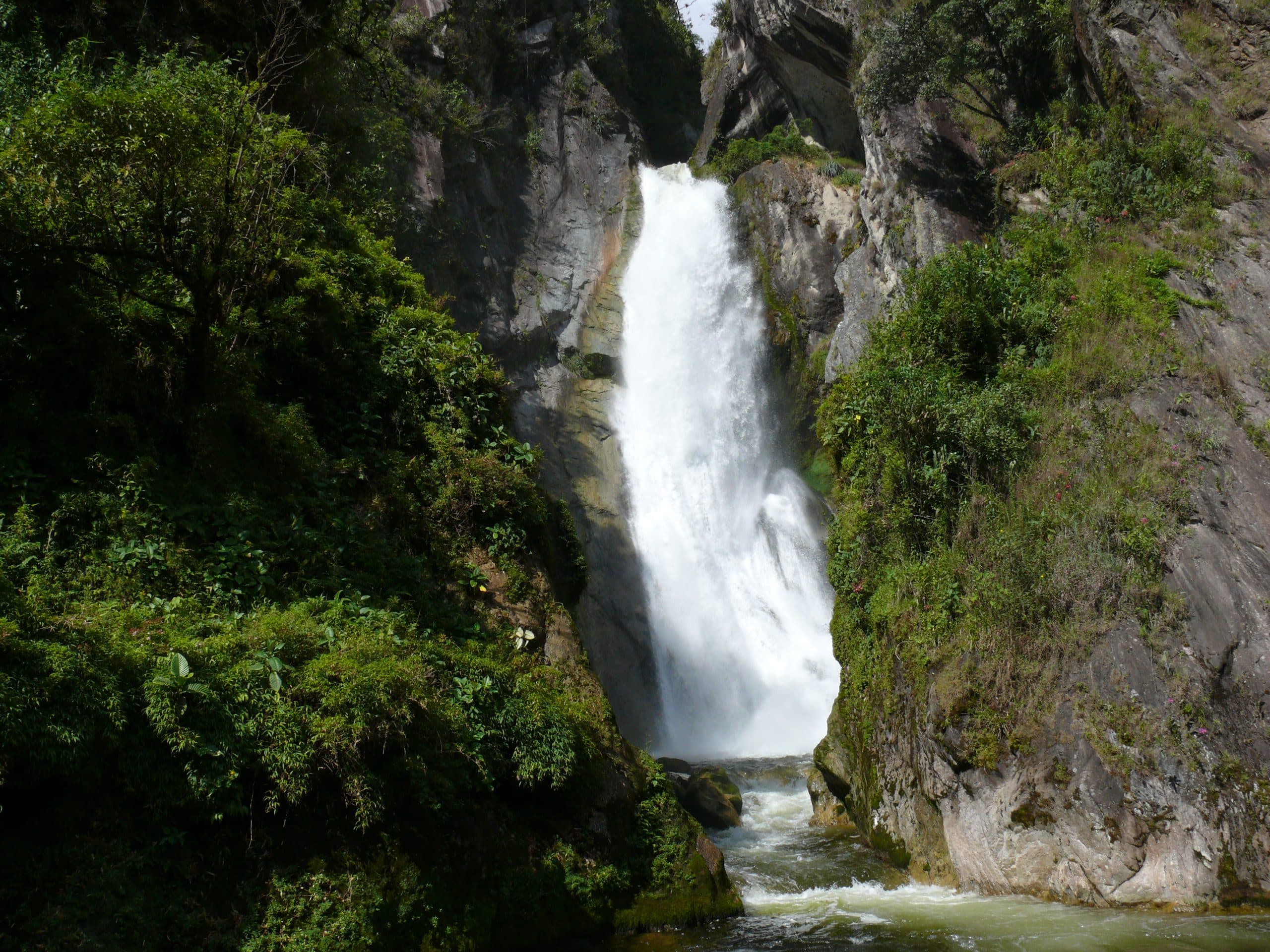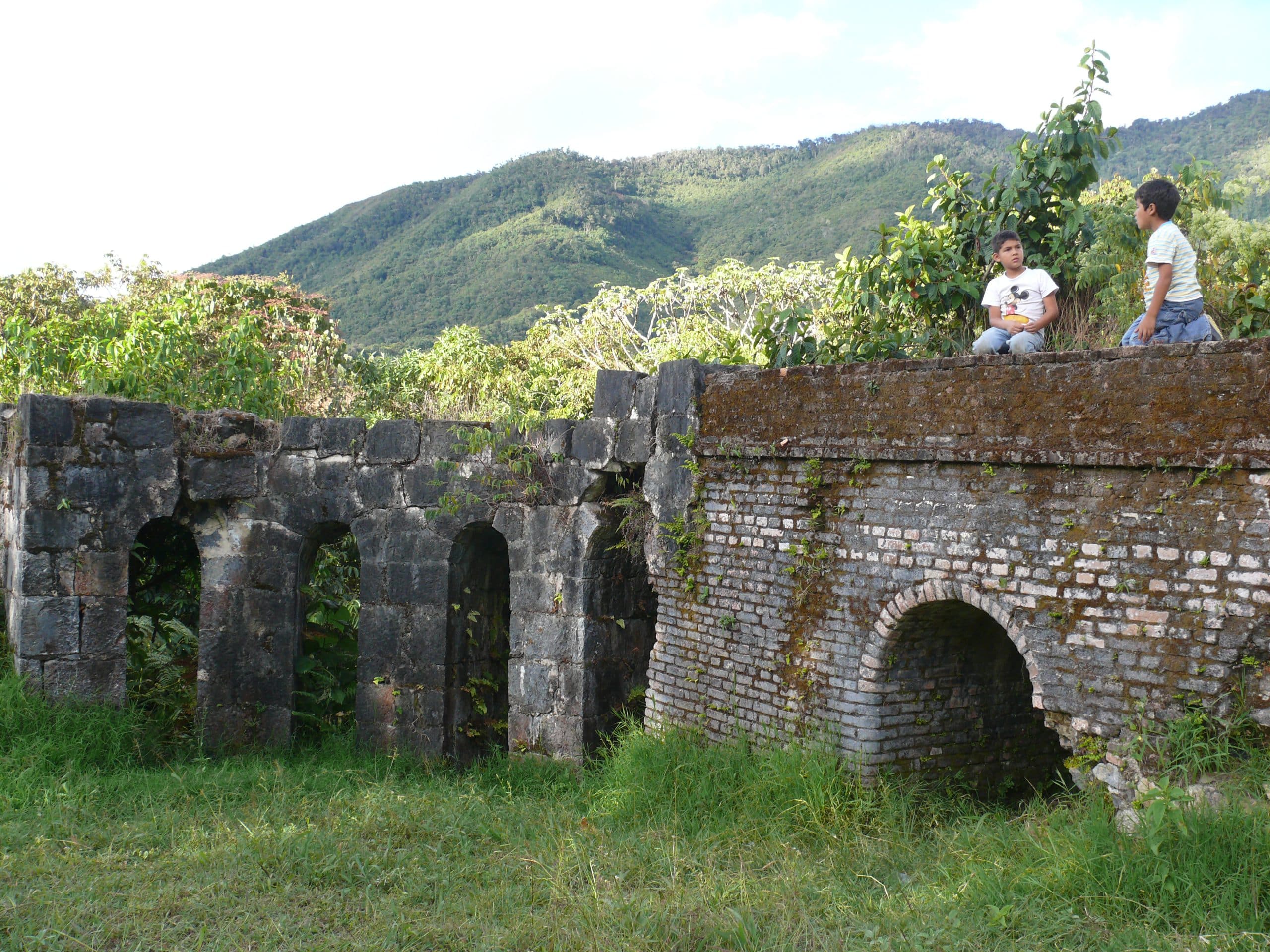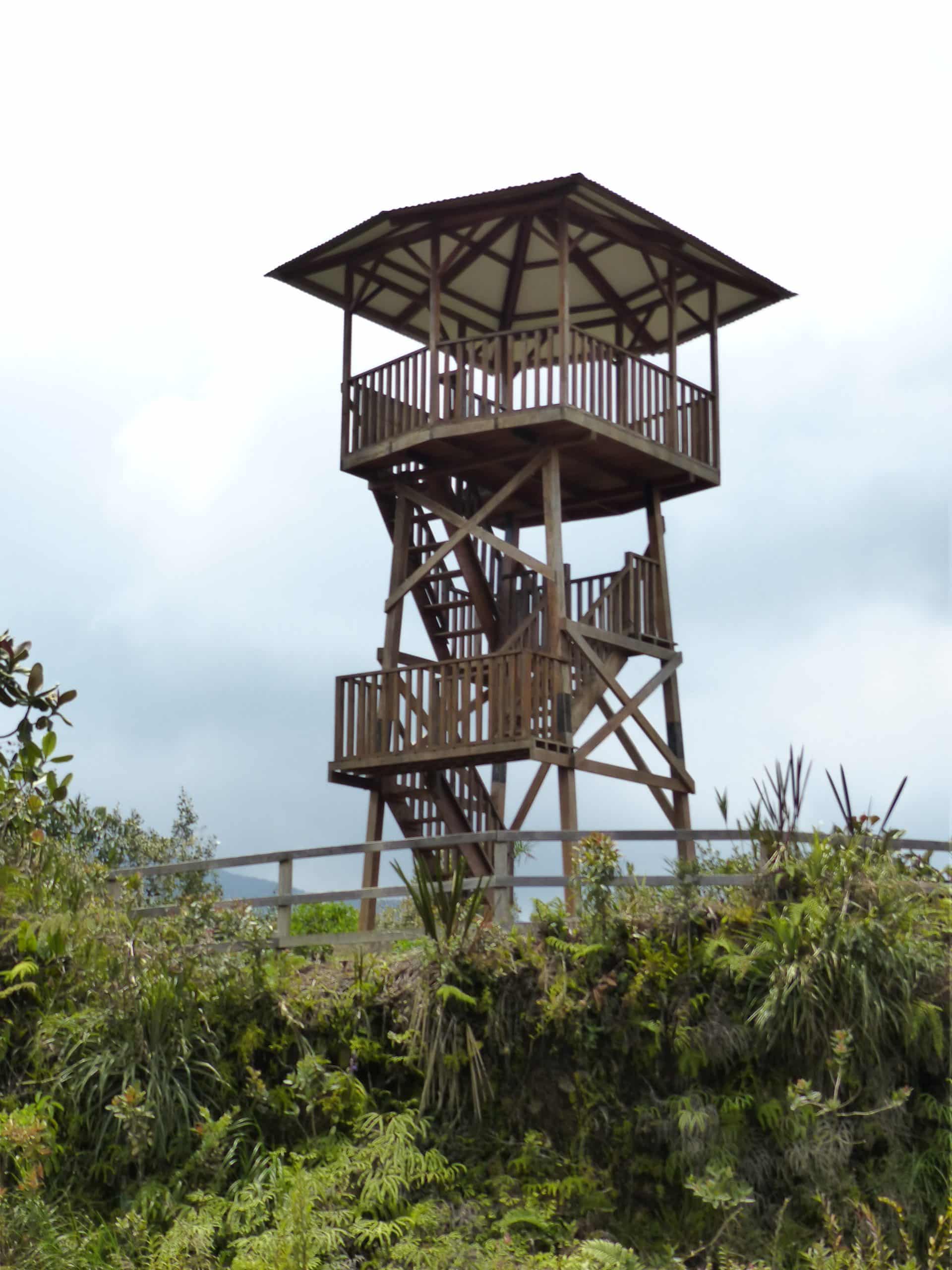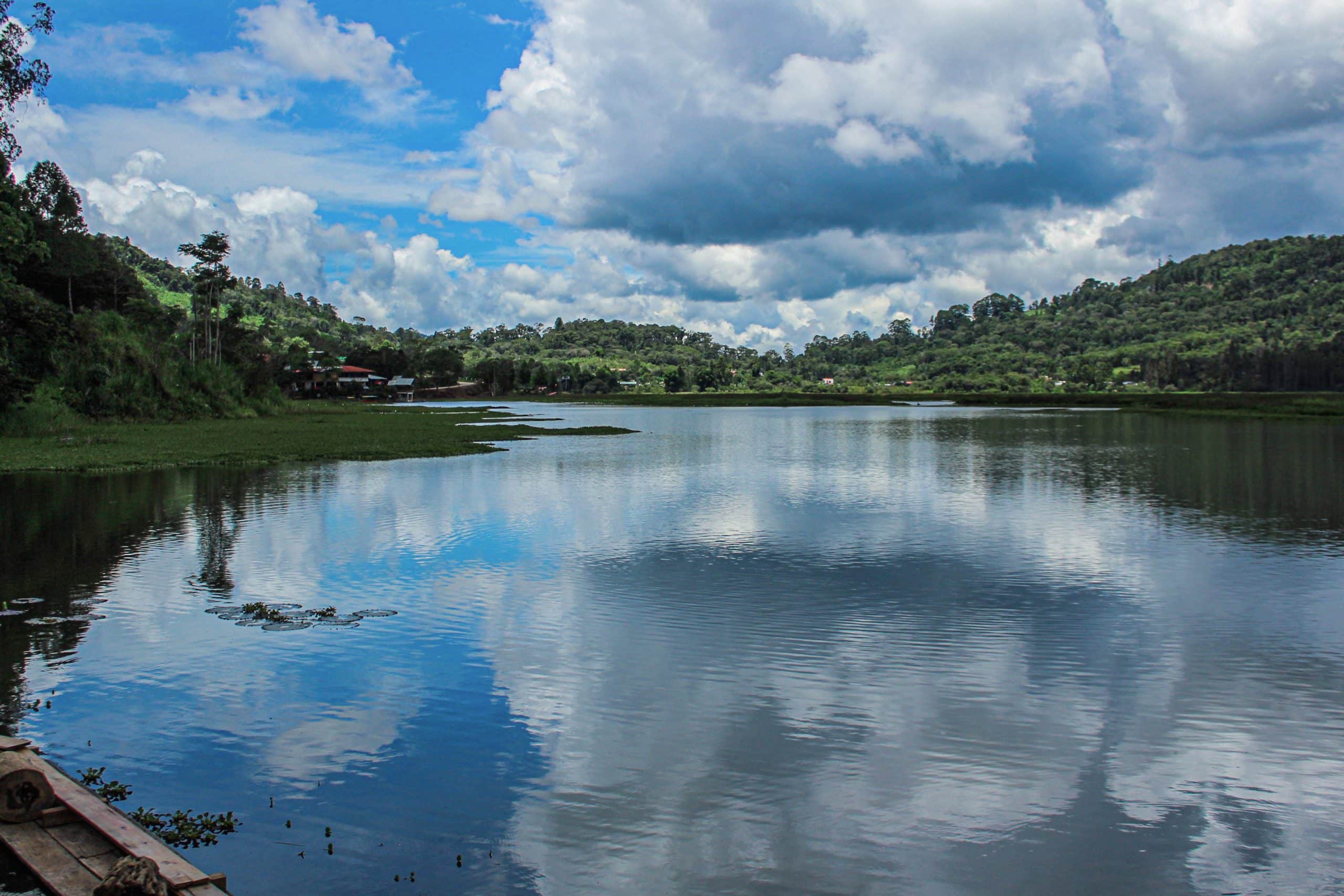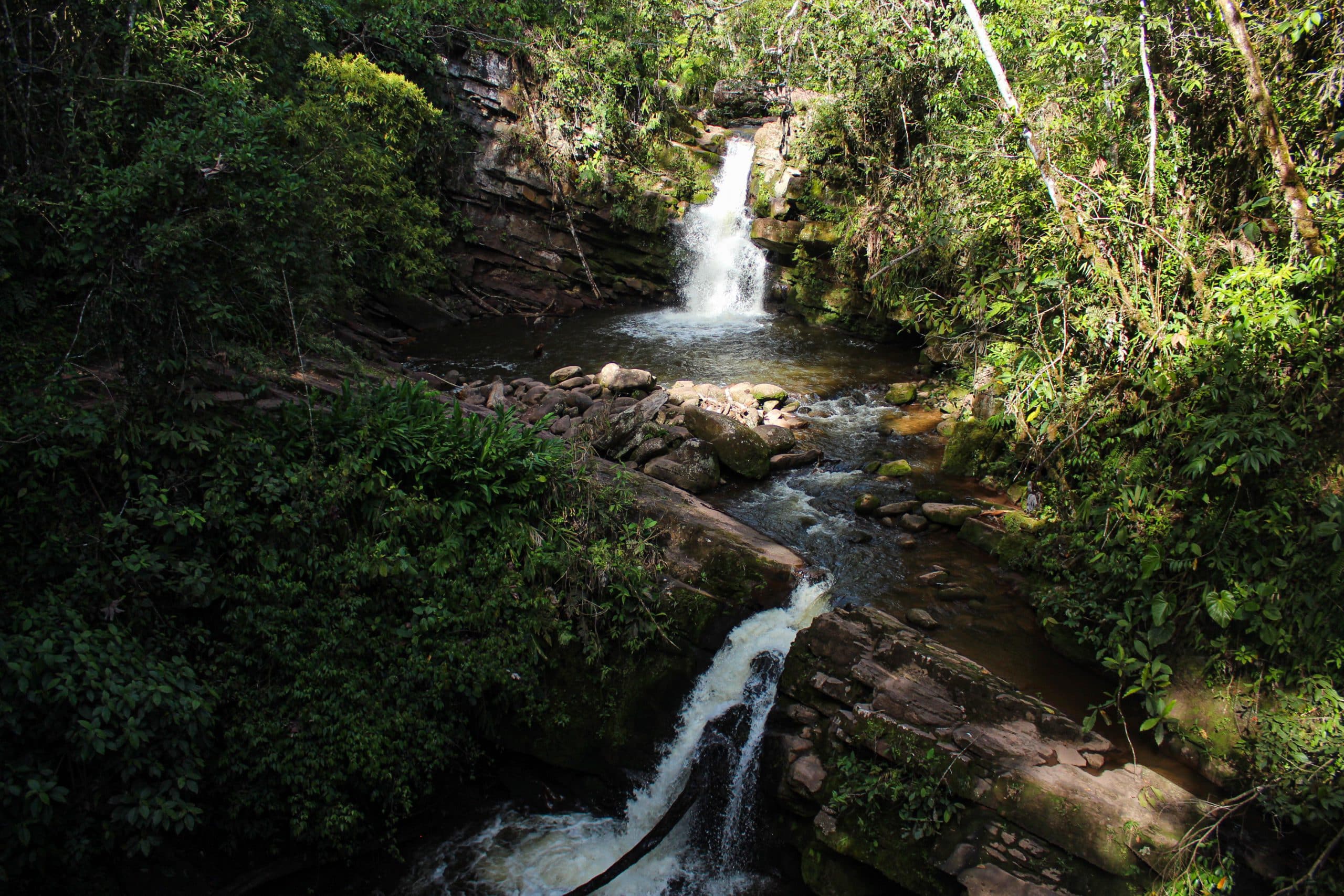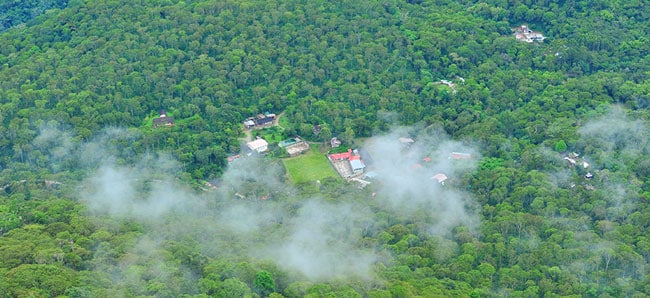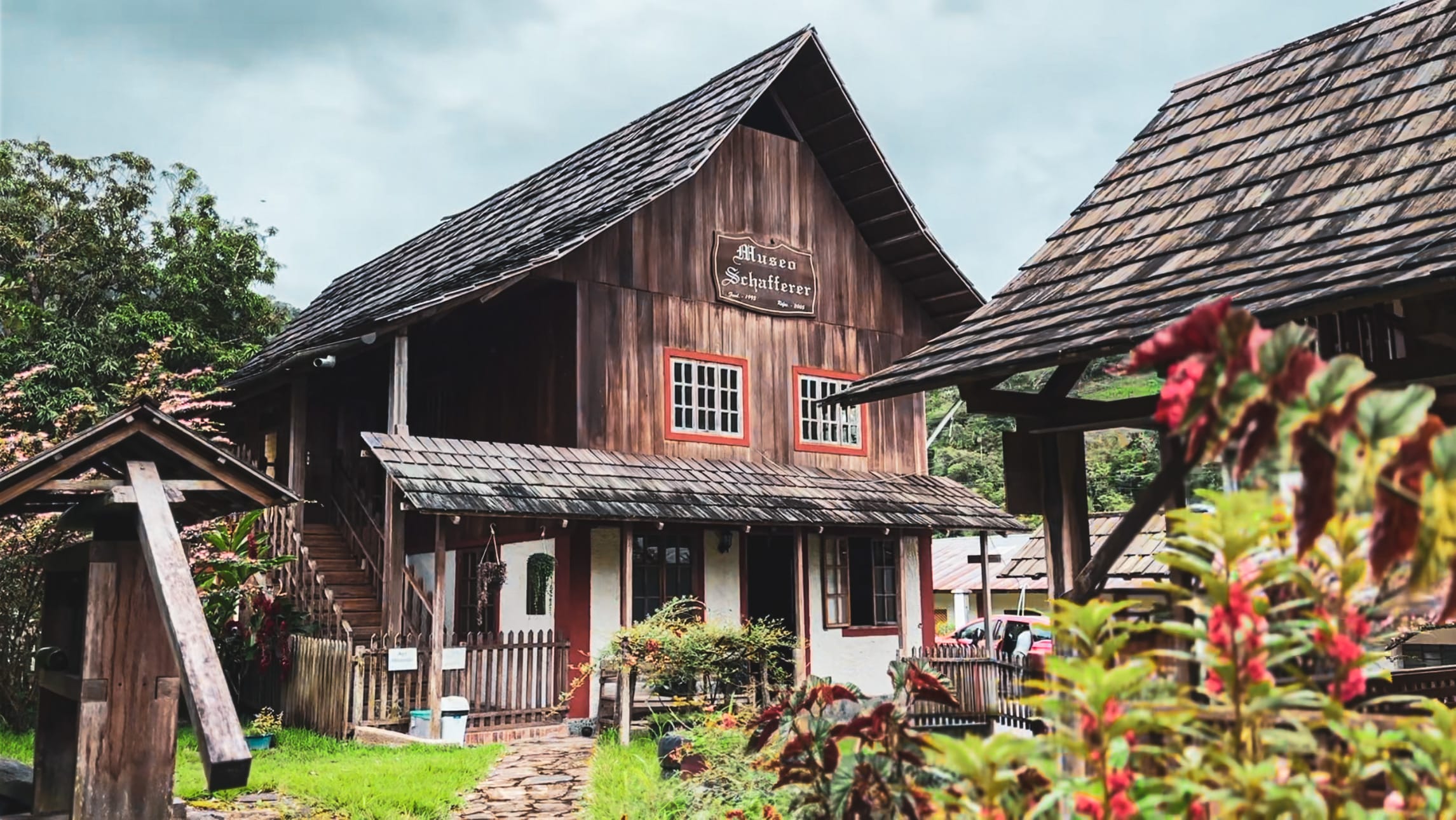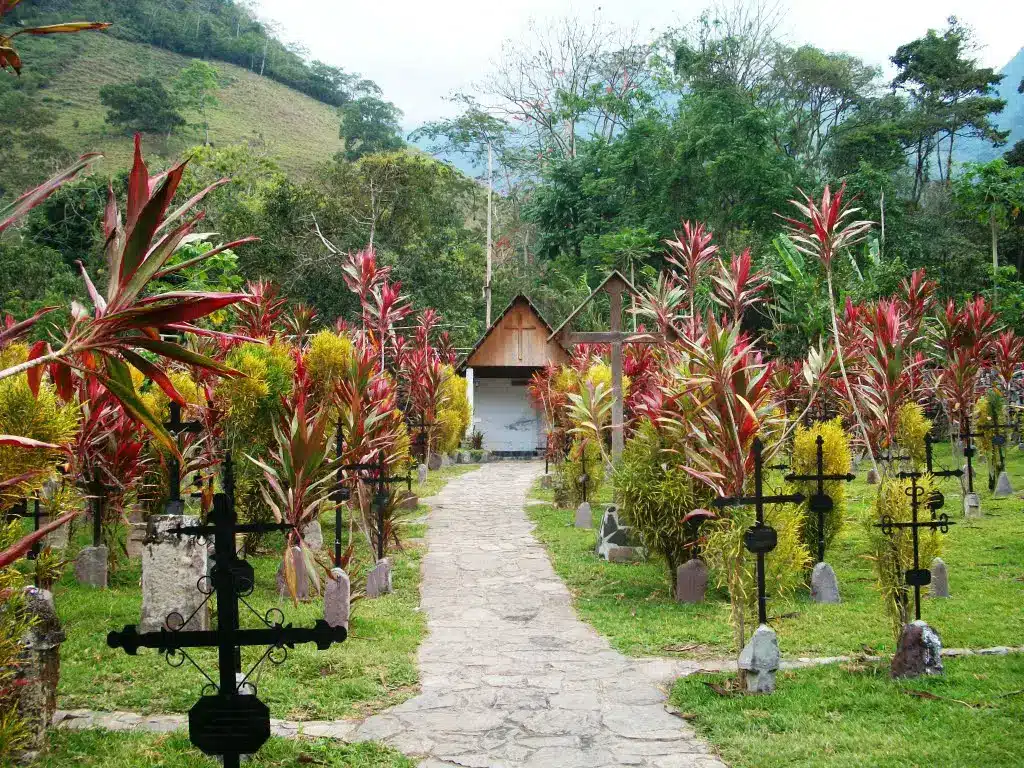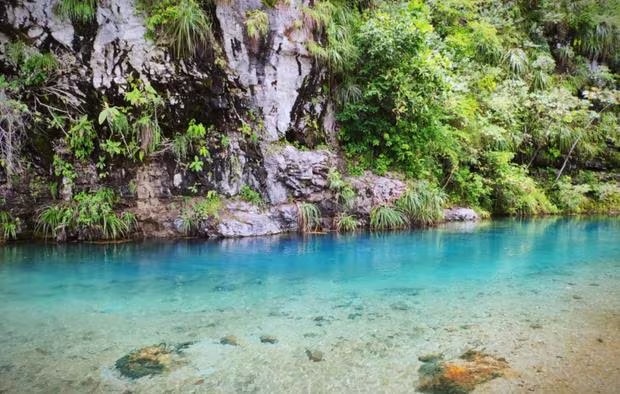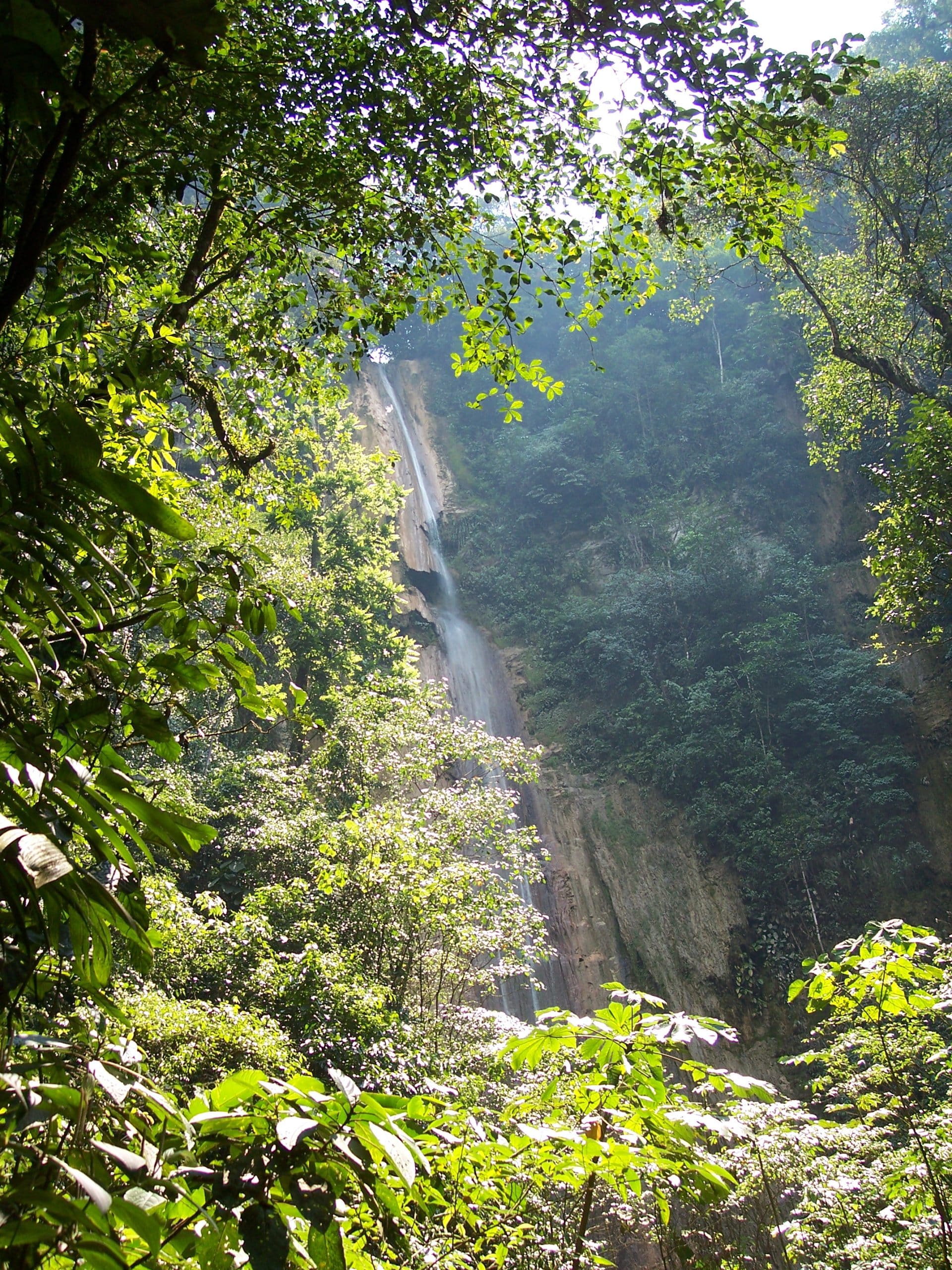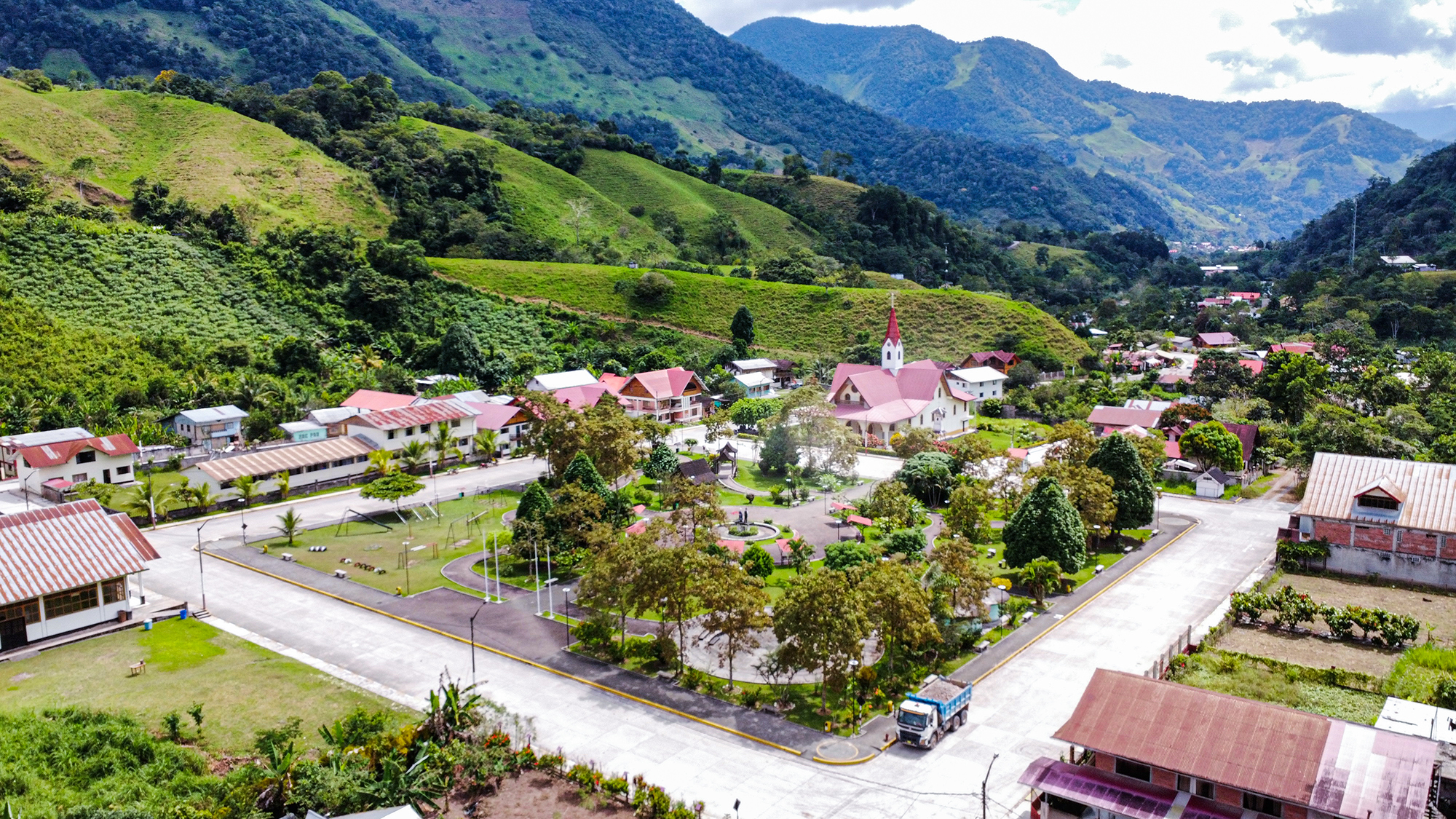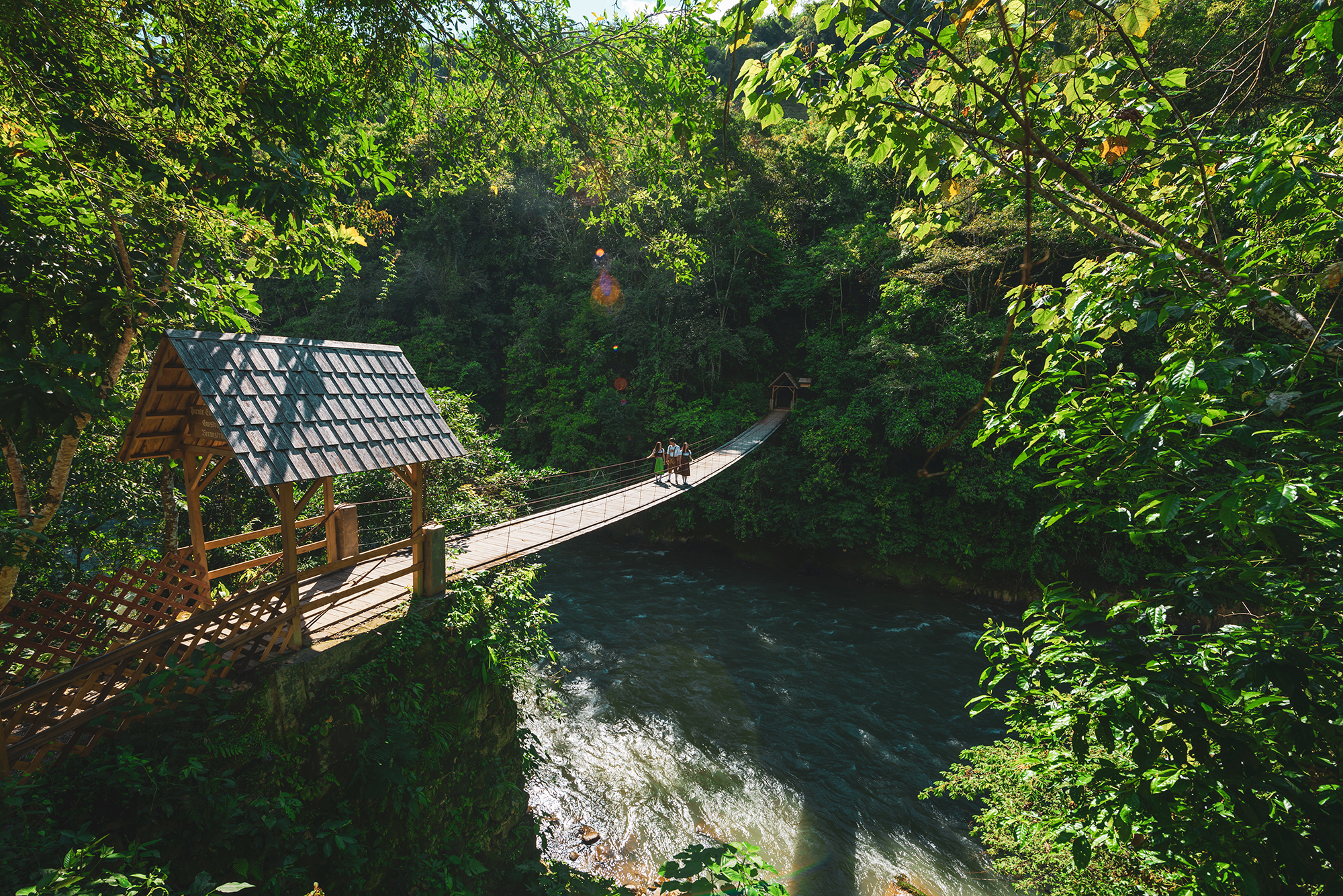Atracciones turísticas
Oxapampa
Oxapampa
A fines del siglo XIX y primeras décadas del siglo pasado fue la fundación de Oxapampa un 31 de agosto de 1891 por Don Enrique Böttger Treu y un grupo de colonos pozucinos de origen alemán que habían llegado a Pozuzo en el segundo grupo de inmigración (1868).
En marzo de 1876, Enrique Bottger lidera un pequeño grupo de fundadores con su hermano, también descendiente alemán, Eliseo Schrader, Ernesto Von Mullenbruck, de Bohemia, Francisco Rofner, de Tirol y Thomas Schaus, de Renania, comenzaron a negociar con los yaneshas para poder establecerse permanentemente.
Así, los emigrantes obtuvieron el permiso para quedarse en una parte de la tierra perteneciente a los indígenas y nativos y fundaron Oxapampa.
Oxapampa que en el lenguaje yanesha significa “Pampa de Paja” es un lugar encantador que abruma por su biodiversidad y su riqueza cultural, donde se puede realizar turismo vivencial y cultural, disfrutar de un ambiente cálido rodeado de montañas verdes y aprender las costumbres de los pueblerinos.
Hoy es el resultado de la fusión de tres etnias: habitantes yaneshas de la zona, europeos colonizadores y posterior inmigración alto andina. Las casas han sido construidas en su mayoría de madera al estilo europeo, y a pesar de que han pasado varias generaciones desde su fundación, todavía se practican gran parte de las tradiciones: danzas tirolesas, yaneshas y alto andinas; torneo de cintas y rodeos exhibidos en algunos ranchos; elaboración de wharapo y destilación de aguardiente; exposiciones artesanales y gastronomía.
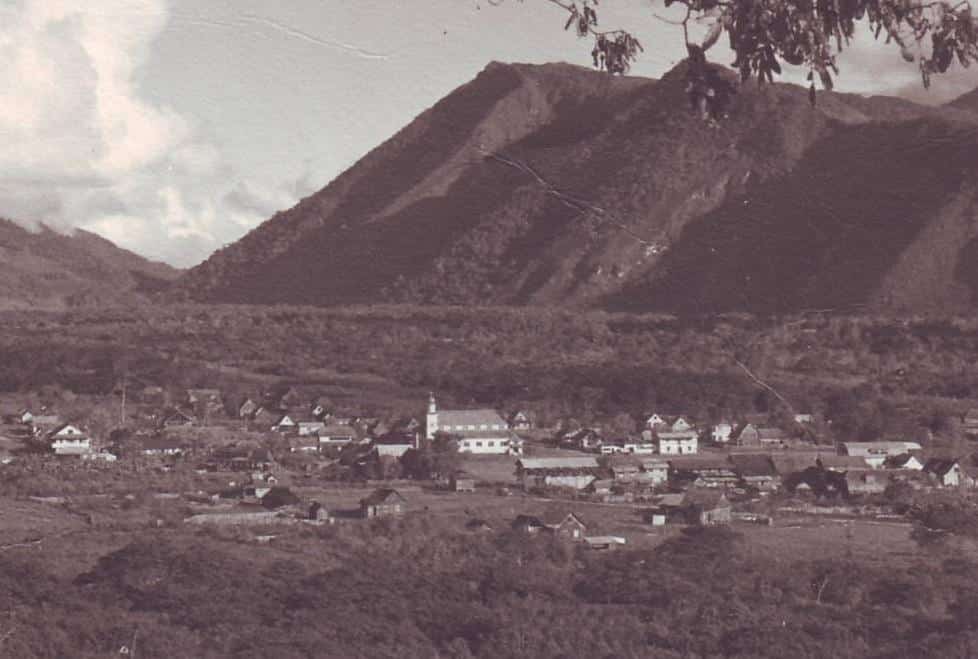
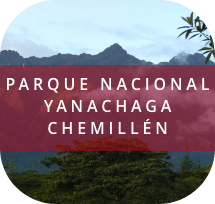
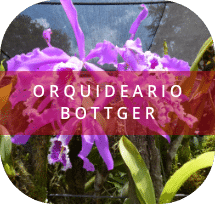
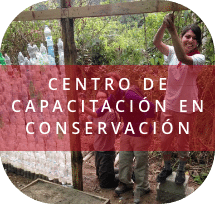
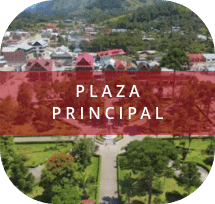
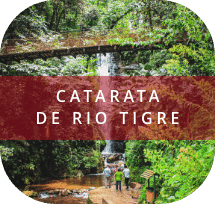
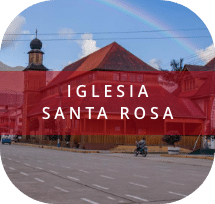
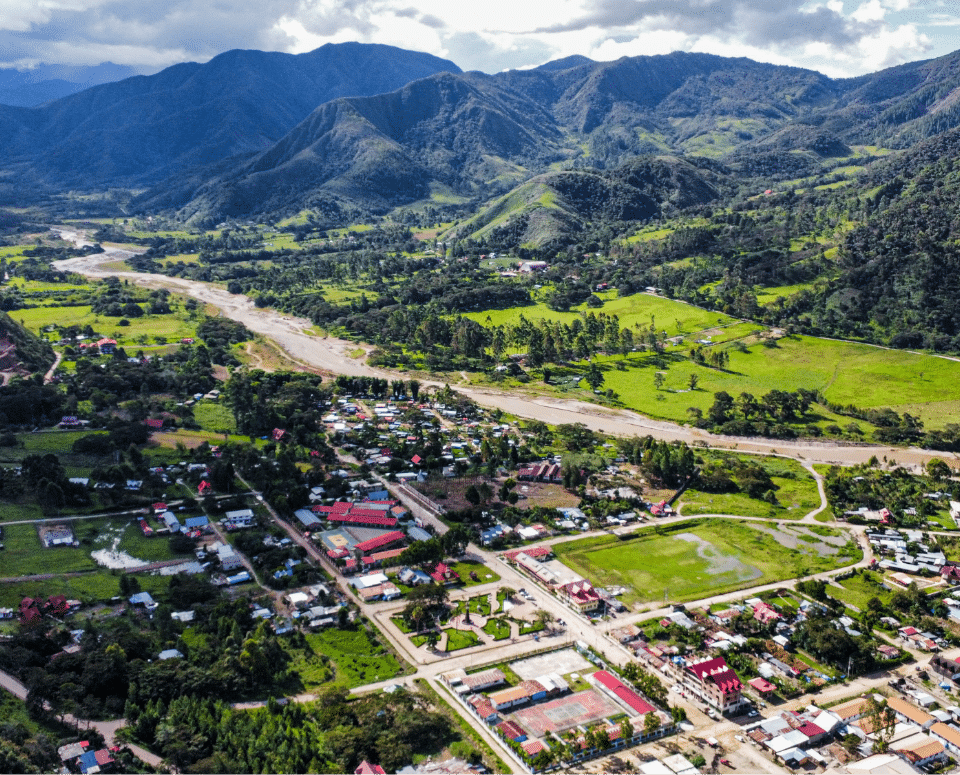
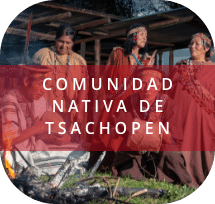
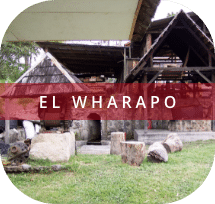

Chontabamba
Es el distrito más visitado, ya que está situado a sólo 7 km o 5 minutos en carro de Oxapampa y tiene lugares aptos para visitar con niños muy pequeños. Fue fundado por inmigrantes austro–alemanes. Es un valle fértil en el que se desarrollan actividades como la ganadería y agricultura.
Los tours locales tienen un recorrido que toma alrededor de 3-4 hora incluyendo la visita al mirador de Chontabamba, criadero de truchas La Cumbre, el Wharapo, el puente colgante, fábricas de queso, pasar por el barrio Alpental, El rancho la Victoria (en donde también podrán almorzar y montar a caballo).
También es posible realizar la ruta por cuenta propia, sólo habría que pagar las entradas que corresponden en el Mirador, criadero de truchas, el wharapo y Tunky Cueva.
Huancabamba
Este paseo es una excelente opción para grandes y chicos, pues se puede llegar a todos los puntos en carro, sin necesidad de hacer largas caminatas.
Está ubicada a 27 km de Oxapampa (1hora) y se llega siguiendo el camino que conduce a Pozuzo. Fue la primera capital de Oxapampa y aquí se dio origen al tradicional torneo de cintas a caballo.
Puede realizar un tour y visitar los distintos atractivos como la Catarata de Anana y las ruinas de antiguas haciendas, partiendo a las 9 am y regresando a las 5 pm.
También es posible hacer la ruta por cuenta propia, ya que hay buena señalización.
Es importante llevar ropa cómoda y ligera, zapatillas de excursión, ropa de baño, toallas, repelente, bloqueador y sombrero.
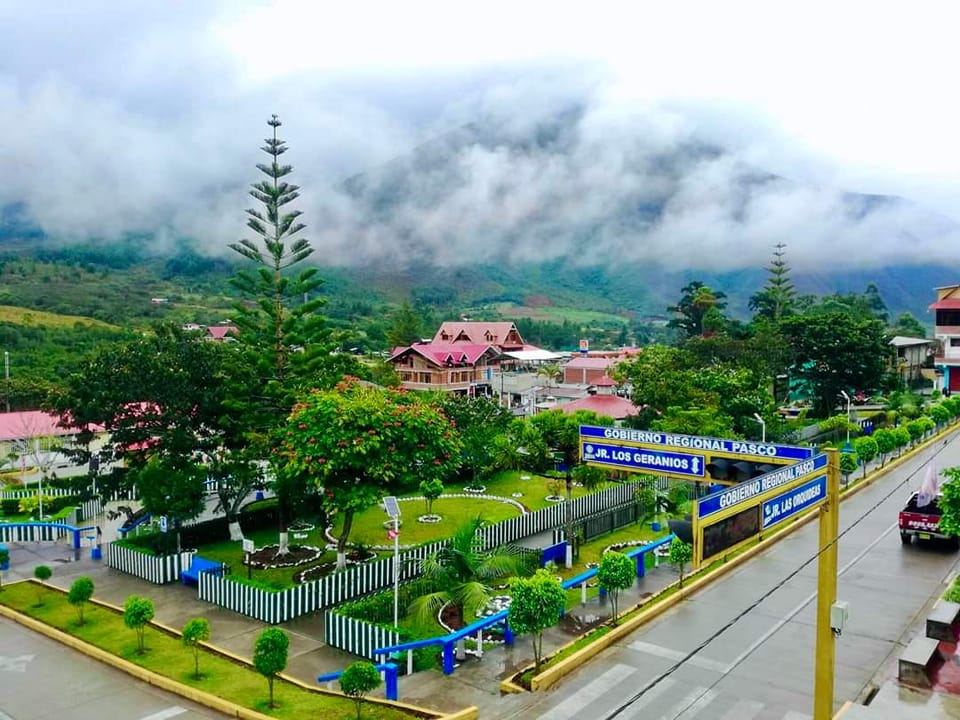
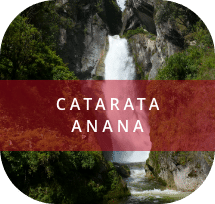
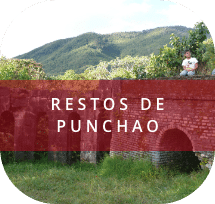
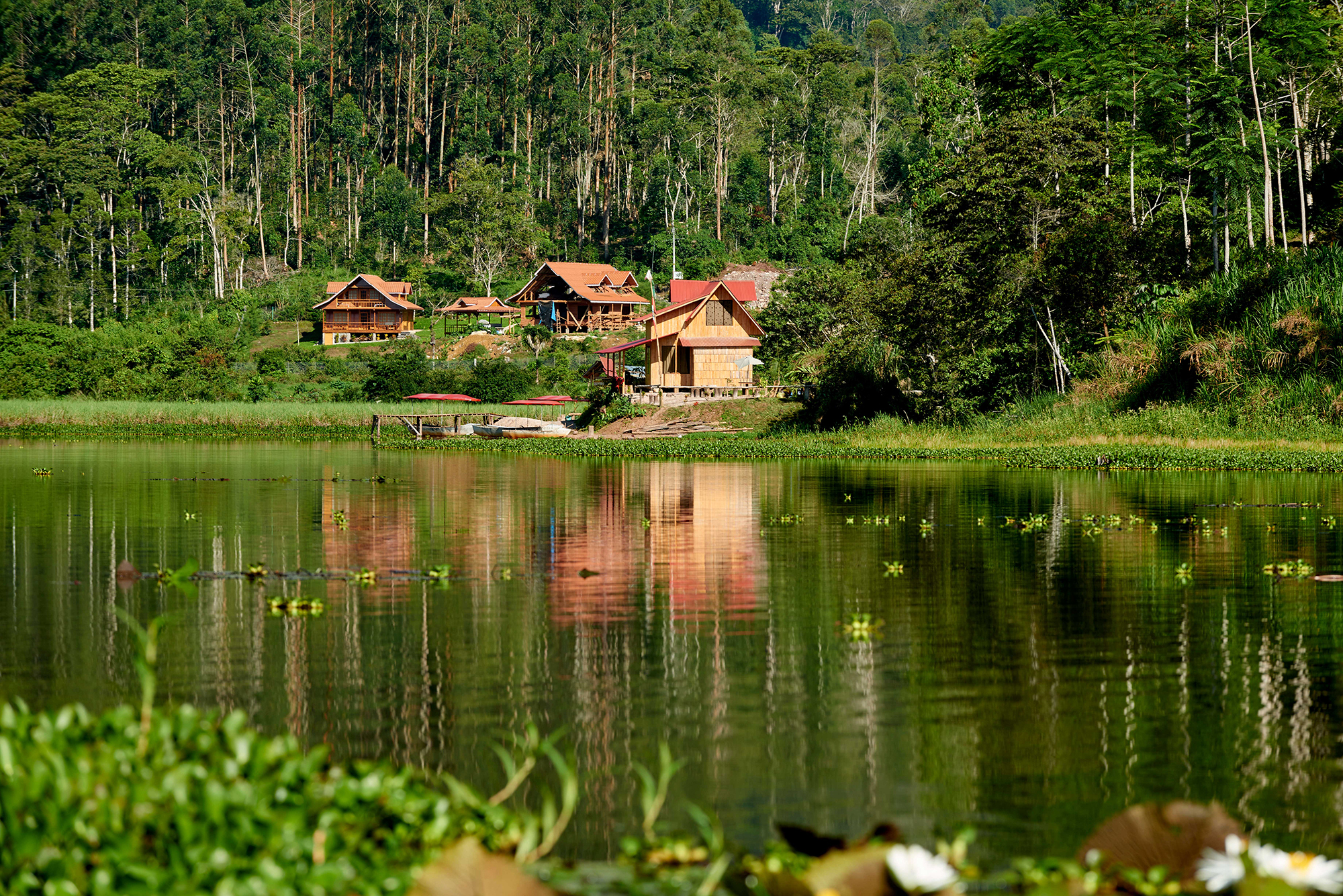
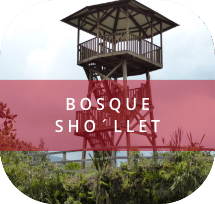
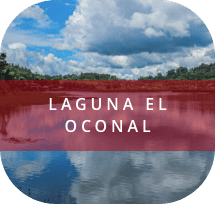
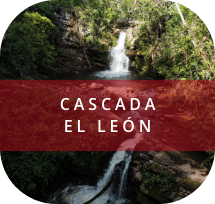
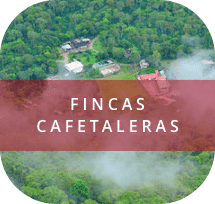
Villa Rica
Este distrito es conocido como “La tierra del café más fino del mundo” y se encuentra a 37 km de Oxapampa. En caso de tomar un tour, el recorrido toma alrededor de 10 horas, partiendo a las 8:30 am y regresando a las 6:30pm.
La visita incluye un city tour, el mirador, la cascada El León, la laguna El Oconal y termina con la visita a una Finca Cafetalera.
Si prefiere ir por cuenta propia también es posible, puede tomar la ruta por la carretera La Merced que se mantiene en muy buen estado o la ruta que va por El Abra.
Ambas toman aproximadamente 1 hora y 15 minutos, la diferencia es que por El Abra es posible hacer una parada en el Bosque de Sho´llet y la pista no es asfaltada.
Es importante llevar ropa cómoda y ligera, zapatillas de excursión, ropa de baño, toallas, repelente, bloqueador y sombrero.
Pozuzo
Este pintoresco pueblito es la única colonia austro-alemana en el mundo y alberga mucha riqueza natural y cultural.
En caso de tomar un tour, toma alrededor de 12 horas, partiendo a las 6:30 am y regresando a las 6:30 pm. Durante el recorrido pasará por el distrito de Huancabamba, la catarata de Torrebamba, la catarata Rayantambo, el impresionante Cañón de Huancabamba y la cascada de Yulitunqui.
Al llegar a Pozuzo podrá conocer la plaza de armas, el cementerio, el museo Schafferer, el puente Guillermo Emperador I, y la planta de cerveza artesanal Dorcher Bier. Luego una refrescante visita a las Pozas de Agua Salada y antes de regresar una visita al barrio de Prusia.
Si se prefiere ir por cuenta propia también es posible, la ruta toma entre 1:45 y 2 horas. Es importante llevar ropa cómoda y ligera, zapatillas de excursión, ropa de baño, toallas, repelente, bloqueador y sombrero.
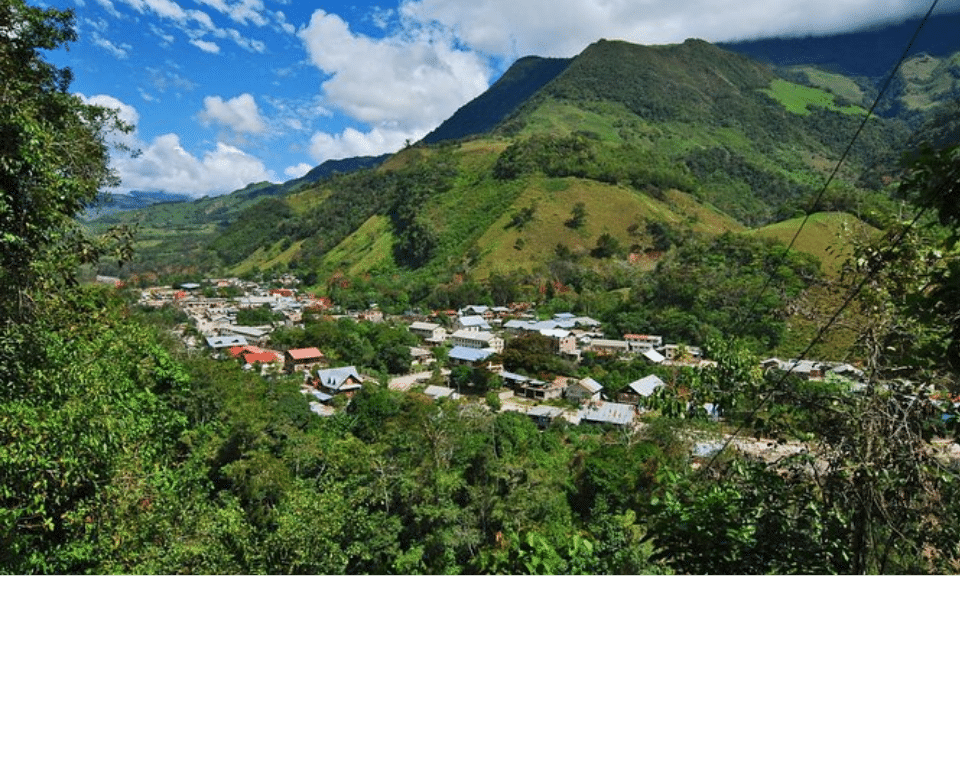

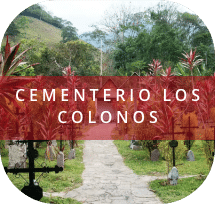
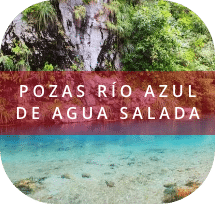
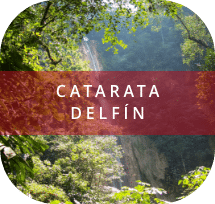
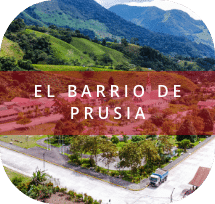
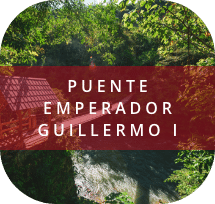

Lo que nuestros
huéspedes dicen
Excelente hospitalidad
Las Duchas espectaculares. La mejor ducho en hoteles de Provincia.
Lo disfrute al máximo
Nos sorprendió que teníamos una mesa reservada para el dedayuno y con un detalle identificando a la Familia. Disfrutanos de un excelente desayuno, un espacio muy acogedor. Las habitaciones muy cómodas y con todo lo necesario para una muy buena experiencia
Días perfectos en familia
Todo el servicio, personal e instalaciones son perfectas. A1 la expertiencia.
Exceptional
Es un pequeño paraíso en medio de la selva, incluso en los días de lluvia, se siente cálido y fue excelente para los niños. Muy agradecida con la ayuda para el envío de los documentos que olvidamos. Gracias⭐
Hermosa Experiencia
Las cabañas son acogedoras y el paisaje hermoso, buen desayuno.
SUPER RELAX
El desayuno variado y super rico. Las instalaciones muy bonitas. Lo mejor el hospedaje estaba a 10 pasos de la agencia de autobuses (Movil Tours)
Año Nuevo Oxa, Amigos y Novia
El desayuno es cuanta con una variedad no extensa de alimentos, suficiente como para que una persona pueda sentirse satisfecho. La ubicación se encuentra relativamente cerca a la plaza, de tal manera que se puede llegar caminando o también se puede tomar una moto por 2 soles por persona. El lugar son cabañas rodeadas de vegetación tan bonita que se pueden apreciar mariposas todas las mañanas. Adicionalmente, el personal del hotel nos ayudó increíblemente pues tuvimos una confusión con la cantidad de personas que éramos y las habitaciones que separamos, de tal manera que lograron acondicionar una cabaña más grande donde pudiéramos entrar todos, excelente servicio.
Un excelente lugar para quedarse en Oxapampa
La atención de primera, y las instalaciones excelentes.
Muy bonito lugar. Relajante y con super desayuno
El desayuno fue exelente! Y la ubicacion perfecta para caminar desde el terminal de bus y tambien una caminata facil para llegar a la plaza principal.
Muy acogedor
El desayuno es excelente, el alojamiento se encuentra cerca a la terminal de buses.
Para regresar pronto
Excelente el servicio de desayuno y cordialidad de los empleados
Great central Oxapamba location with beautiful gardens
Beautiful lush garden grounds right in the heart of Oxapamba. An easy walk to many restaurants. Allows pets. Very helpful front desk staff. Room was very comfortable with nice deck out front to enjoy the birds in the garden.
Me gusto mucho estas cabañas el concepto y la cercanía fue lo mejor
Muy cómodo muy rica comida
Fue una estadía breve pero nos sentimos bien recibidos y el ambiente es excelente para relajarse, mucha vegetación para
Cercanía al terminal. Nos permitieron hacer el checkin adelantado sin ningún cargo. Pudimos dejar nuestra maleta en custodia sin inconvenientes. Personal amable Desayuno variado, gran detalle el de personalizar las mesas para el desayuno.
Exceptional
Muy limpio y el ambiente te hace vivir la experiencia de estar en Oxapampa. El desayuno increíble
Great garden! the peace I needed
I was in love with the garden! Lots of plants and trees ... and birds 🙂 It is a very peaceful place to relax. The cabin I stayed in was very nice and comfortable. All the staff was always helpful and kind.
Recomiendo este hotel para todo aquel que busca permanecer en un ambiente rodeado de áreas verdes
Me gustó mucho la atención del personal, fueron muy atentos y amables. La ubicación me pareció perfecta porque está cerca al terminal de buses y permite salir a caminar por un lugar seguro a los alrededores. Si eres de los que les gusta caminar, el hotel tiene un poco de distancia hasta la plaza lo cual permite que puedas caminar tomando un poco de aire fresco mientras buscas tu lugar ideal para cenar, por ejemplo. Me gustó que el hotel incluya desayuno tipo buffet.
Exceptional
Las cabañas muy cómodas, todo de primera. Atención muy buena y el desayuno excelente!!
Buen hospedaje
El personal es atento, me ayudaron con la habitación antes de la hora del check in, el desayuno bufett muy rico.
Lovely all around
Staff was great, the breakfast was delicious and carefully thought out. The hotel itself is beautiful, the rooms well taken care of. There's a pool and fire pit which we didn't get to use do to the quick nature of our trip (we were there for 2 days for a wedding). We were easily accommodated when we asked for early check in and late check out. Plus the hotel is a 2-minute walk from the bus station.
Great staff, superb breakfast, top location
Super friendly staff, amazing breakfast
Bueno y bonito… pero faltan cosas para que el precio valga la pena
Buena ubicación. Muy silencioso a pesar de estar a unas cuadras de la plaza. Habitaciones muy limpias.
Good
Las instalaciones, los jardines, la tranquilidad y la amabilidad del personal
Hermoso hotel y excelente estadía
la hospitalidad del hotel, fogata todos los días en la noche y el desayuno buffet delicioso
Hermoso hospedaje en medio de la naturaleza
Los bungalows son muy bonitos, cómodos y limpios, el hospedaje es hermoso con muchas plantas, el desayuno variado y rico.
súper acogedor y un excelente servicio
lo mejor de Oxapampa y los desayunos no tienen comparación, toda mi familia quedo encantada.
Very good
La atencion es muy buena, el staff muy atento y te brinda ayuda cuando la pides. El desayuno muy rico y variado, el hotel es muy lindo y conservado. Las habitaciones muy cómodas y bonitas. Vale la pena quedarse
Si vas a Oxapampa, quédate en Carolina Egg
Me gusto TODO , la ubicación (a 2 cuadras del terminal) , la infraestructura (todo es verde, ecológico a mil), las habitaciones super cómodos, los bungalows super completos, el desayuno buffet es muy bueno, el personal es muy amable, atentos, buena onda, volveré de todas maneras!!!
Hervorragend! Wir kommen wieder. Ein Paradies
Wir haben drei Nächte im Gasthaus Carolina Egg in Oxapampa verbracht. Es war wunderschön! Ein Paradies auf Erden! Wunderschön gelegen, mit freundlichem Personal.
Hermosa experiencia en un cálido y bonito lugar, el servicio excelente recomendable al 100 %.
Muy bueno y bonito. Son cabañas con lo indispensable para pasar los días y en el centro de la ciudad.
Sabía que un hospedaje lindo, sin embargo después de haber estado ahí, puedo decir que es un lugar perfecto para relajarse, pasarla bien, tienen unas habitaciones hermosas, desayunos deliciosos y el personal que trabaja allí es A1. Gracias por unos días maravillosos que pasé ahí...
Servicio amable y detallada. Desayuno rico,7 AM - 9:30 AM Velocidad de internet suficiente. La ducha tiene excelente presion de agua, agua caliente 6 AM-10 AM y 6 PM - 10 PM. Ofrecen servicio de lavanderia, S/. 8 x kg. Lugar muy tranquilo, verde, muy bien cuidado.
Un hospedaje altamente funcional, las cabañas muy acogedoras, cero ruidos y las áreas verdes encantadoras. La atención de primera el personal muy atento a las necesidades de los huéspedes, ellos tuvieron la generosidad de preparar una tortita y felicitar a mi hija por su cumpleaños fue toda una sorpresa. Muy recomendable para pasar tiempo de relax en familia.
Excelente servicio, el hotel muy bonito, todo limpio, un buen lugar para ir con la familia, mi pequeña se divirtió mucho, le encantó! 100% recomendados
Agréable nuit passé dans cet hôtel composé de chalets bois tout confort.
Me encantó la tranquilidad y la hospitalidad del hotel. El desayuno era muy rico, y realmente se siente como un pequeño oasis dentro de la ciudad, ubicado a solo 50 metros de la estación de buses y a 3 minutos en carro o mototaxi de la Plaza de Armas. La cena de Año Nuevo fue deliciosa, y estoy muy agradecido por la amabilidad de todo el personal. ¡Una experiencia excelente!
Ubicado en Oxapampa, recomiendo este lugar por su exelente servicio de hospedaje, en cabañas, rodeado de vegetación, un lindo lugar para descansar
Awesome complex in the heart of Oxapampa with a convenient walk to restaurants and a tienda next door (though the cabins were nice and quiet). Cute cabins in great shape, nice and clean, very good breakfast, heated pool, nightly fire pit, kids area, helpful front desk staff. Pets allowed! Enjoyed our time there!
Muy bello lugar, cerca al terminar y a la plaza. Bastante vegetación, lo cual ayuda a sentirse relajado. Excelente trato de todo el personal. Muy agradecida 🙌🏼🙌🏼
Es perfecto! Cerca de la plaza, pero entrar en el hotel, te hace sentir en otro mundo. Personal de recepción, limpieza y desayuno... súper amables. Encontramos nuestro bungalow impecable. Y el desayuno era más que completo, con variedad de frutos que cultivaban en el mismo hotel. Definitivamente volveré a este lugar, recomendadísimo.
Super recomendado, amplias areas verdes rodean todas las habitaciones que son pequeñas cabañas, habitaciones amplias y comodas, el desayuno buffet, y el personal super amable. Ubicado cerca al terminal de los buses, en avenida, a 1 km aprox de la plaza, restaurantes y comercios cerca
Hermoso lugar, muy céntrico, la atención muy buena y un desayuno buffet muy rico,, lo único que no me gustó fue que la piscina estaba al lado del comedor, un poco incomodo, pero por lo demás todo muy bien.
Bonito lugar,el desayuno muy bueno,lo que le falto fue un cambiador para bebes ya que tuve q cambiar en recepcion a mi bebe el pañal
Súper cerca a la estación móvil, el lugar es muy acogedor tienen diversas cabañas rodeado de vegetación,desayuno buffet incluido súper delicioso típico de oxapampa y el personal súper amable, la Sra carolina siempre atenta y muy buena persona la atención de ella es formidable una excelente anfitriona te hace sentir como en casa.
Hay más opciones en la zona, mucho más económica y con mejores instalaciones, la relación precio calidad está muy lejos
Si vienes a Oxapampa y buscas hospedaje ,este es el ideal, pensado para aquellos que disfrutamos de la naturaleza,despertar con los silbidos de los pajarillos y verte rodeado de arboles frutales y bellas flores, tomar un delicioso desayuno con panes preparados por ellos mismos ,disfrutar de una caminata recorriendo su interior y de la piscina temperada y en las noches sentarte en familia ,con amigos o en pareja de una calida fogata, sea una cabañita o una habitacion este lugar es unico y magico , Te ayudara a salir de la rutina.
Carolina Egg Gasthaus is an incredible place. The One-Bedroom is comparable to a First Class Suite. The staff is excellent!
Definitely recommended! Location is perfect--very close to the bus station, a 10 minute walk from the main plaza, steps away from the road leading to the national park. Yet the gardens make it feel like you're in the middle of the country, removed from it all. Rooms are comfortable, and each comes with a front porch to relax on (could be improved with the addition of hammocks, just saying...). Breakfast in the morning is delicious! And the staff is friendly and helpful. Didn't try the pool (was cool and rainy while we were there), but we loved the nightly bonfire and stopped by to enjoy its warmth one night!
Es un lugar maravilloso, lleno de vegetación y acompañados del canto de las aves!!! Todo el personal es muy amable y sus desayunos son deliciosos!!!!
Es una experiencia maravillosa, el lugar, la atención son muy buenos y sus desayunos exquisitos, nos encantooooo
Es un lugar hermoso, la atención es de primera, la comida es deliciosa y de excelente calidad, muy bueno para relajarse y descansar
Desde que uno llega todo el personal te recibe con mucha amabilidad, todos están pendientes de que pases una agradable estadía, el desayuno es delicioso. Tienen un espacio para que los niños jueguen y se diviertan, y en la noche la fogata espectacular 100% recomendado.
Hermosa experiencia, un lugar muy acogedor,limpia,cómoda y sobre todo la atención de primera.
Excelentes personas, servicio, hospedaje, ubicación, etc. 100% recomendado. 👋😎👍
Muy buena estadía de primera, atención muy cálida de parte del personal, desde el ingreso hasta la salida, las habitaciones muy cómodas y limpias. Resaltar la atención durante el desayuno, es como si estuvieras en casa son personas muy amables Carolina, Paty y Jimmy en los tours excelente !! Volveríamos de todas maneras ! Recomendado 100% y sobre todo son Petfriendly gracias por la gran estadía 😊😌
Lindo lugar, la dueña, una maravilla de persona... Ideal para disfrutar de tiempo en familia, reconectando con la naturaleza.... Recomendadisimo!!! Y para hacer turismo busquen a Jimmy y Paty!!
muy grandioso Lugar. muy lindo limpio y rodeado de mucha vegetación . muy bien recomendado
Muy cómodo, rodeado de mucha vegetación, todos muy amables, buena ubicación y el desayuno espectacular, recomendado 😋👌🏼
Bungalows completos, amplios, Iluminados y cuentan con todo lo que podrías necesitar. La zona de niños es bastante tranquila, el desayuno muy bueno y siempre brindan diferentes opciones, podría mejorar la rapidez en servir el desayuno, aún así la atención siempre es buena. Definitivamente regresaremos 🤩
excelente lo repitiria y por más tiempo muy bueno todo sobre todo los desayunos
Muy buen servicio, todo limpio, atentos, el desayuno buenazo. Super recomendado.
la atención es muy buena, los ambientes cómodos y se disfruta mucho de la naturaleza.
El ambiente es espectacular, naturaleza pura que te da paz, tranquilidad y te llena de energía, los desayunos ricos y variados, las cabañitas cuentan con todas las comodidades y lo mejor de todo que son pet friendly 🐺 volveremos. Lo recomiendo.
Lugar muy acogedor para la familia, áreas para que los niños jueguen, los bungalows con todo lo que necesitamos, sevicio A1.
Excelente atención, las habitaciones cómodas y deliciosos desayunos.
Todoo, muchas gracias por su atención A1 nos hicieron sentir como en casa y sobre todo su preocupación por el cuidado del medio ambiente muy recomendado, de hecho regresaremos!!
100% recomendado, excelente atención, trato amable y cálido te hacen sentir como en casa!!! Realmente hermoso lugar!!!
Pase una semana encantada de este lugar, muy recomendado, te tratan como en casa y el desayuno buenazo!!!! Espero volver pronto
EXCELENTE en todo aspecto. Mucha calidez en todo momento. 100% recomendado.
su atencion personalizada ,la gran comodidad de sus instalaciones, su maravillosa gastronomia ,sus bellos paisajes que te relajan y olvidas la ciudad hay una pazy sobre todo la gran atencion de Carolina lo recomiendo no se van arrepentir de pasarunos dias ,felicidades y sigan lis exitos un gran abrazo
Es un lugar donde de convive con la naturaleza hermosas cabañas, todo lo que preparan es lo que ellos mismos producen en su huerto.
En noviembre estuvimos por ahí y la pasamos increíble, la hospitalidad y el servicio de primera, Super recomendado!!
Gracias por sus atenciones, quedamos encantados con sus ambientes y del desayuno buffet, ni q decir!! Gracias por el hermoso detalle 💐🌷
Excelente lugar y ambiente, te atienden como en casa y dispuestos a ayudarte en todo.
Recomiendo el Carolina Egg porque no solo tiene un ambiente tranquilo sino también por todo lo que tiene sus bungalows: frigo bar, hervidor, microondas. Su personal es muy caluroso y amable!
me encanta el orden y los espacios libres que te permiten desarrollar actividades diversas. las frutas alrededor y el huerto son muy bonitos.
Lindos momentos en familia en el mejor lugar para alojarnos. Todo de primera. Desde las instalaciones, las habitaciones, la riquísima comida y ni que decir de la amabilidad y cordialidad de la Sra Carolina, su hijo Richard a quien conocimos también y su personal. Son lo máximo. Hasta pronto! Nos volveremos a ver. Mil gracias!!!!
Muy recomendable. Perfecto para descansar y pasar en familia.
Pasamos un bonito fin de semana con mi familia! Muy lindo lugar y sobretodo las personas muy amables. Las instalaciones y las atenciones, muy bonito todo. Lo recomiendo 100%
Excelente hotel, muy acogedor, servicio de primera y personas muy amables, sobre todo la sra. Carolina Egg. 100 puntos!
Super recomendado! Acabo de estar, ahi, y la atención muy buena, amables, y las instalaciones lindas. Sus bungalows muy cómodos, muy buena opción para alojarse y estar en contacto con la naturaleza.
El Hotel es excelente, el servicio es de primera, tienen muy bonitos detalles desde el momento de la recepciòn, estoy muy contento y satisfecho de haber podido alojarnos con mi familia en este hermoso hotel, cuando regresemos a Oxapampa volveremis a alojarnos en este precioso hotel.
lugar excelente para descansar, ideal para familias con niños y mascotas, desayuno riquísimo el mejor alojamiento en Oxapampa.
Lindo, acogedor, cómodo, no le falta nada!!! buena atención muy amables, desayuno buenazo, recomendadisimo!!!
Como locación es hermosa. Los colores de sus flores, el verde de sus jardines y sus frutos contrastan con el color de su madera. Adentro de las habitaciones reina la limpieza y la comodidad. Su desayuno es de lujo y usan como alimento sus propios recursos. Los dueños y administradores son muy amables y están siempre dispuestos a conversar. Quizá sea esto algo que otros hoteles tengan, pero los diferencia mucho su compromiso socio-ambiental y su conciencia ecológica. Nos enseñan que todo lo orgánico es aprovechable; y lo no orgánico, reutilizable. Gracias por tanto.
Nos sorprendió que teníamos una mesa reservada para el dedayuno y con un detalle identificando a la Familia. Disfrutanos de un excelente desayuno, un espacio muy acogedor. Las habitaciones muy cómodas y con todo lo necesario para una muy buena experiencia
Hermosa experiencia en un cálido y bonito lugar, el servicio excelente recomendable al 100 %.
Muy bueno y bonito. Son cabañas con lo indispensable para pasar los días y en el centro de la ciudad.
Sabía que un hospedaje lindo, sin embargo después de haber estado ahí, puedo decir que es un lugar perfecto para relajarse, pasarla bien, tienen unas habitaciones hermosas, desayunos deliciosos y el personal que trabaja allí es A1. Gracias por unos días maravillosos que pasé ahí...
Es un lugar maravilloso, lleno de vegetación y acompañados del canto de las aves!!! Todo el personal es muy amable y sus desayunos son deliciosos!!!!
Es una experiencia maravillosa, el lugar, la atención son muy buenos y sus desayunos exquisitos, nos encantooooo
Es un lugar hermoso, la atención es de primera, la comida es deliciosa y de excelente calidad, muy bueno para relajarse y descansar
Av. San Martin 1085, Oxapampa, 19231, Peru
+51 975 457 964
infocarolinaegg@gmail.com
Copyright 2024 Carolina Egg Gasthaus, all rights reserved.

